Our Story
Coral ARKs are floating reef platforms designed to regenerate ocean life, restoring coral, fish, and biodiversity in the new and improved methods. Built for resilience and replicability, ARKs lift miniature reef ecosystems into the midwater zone, where conditions like light, flow, and oxygen are optimal for coral growth and survival.
Each Ark integrates ARMs (Autonomous Reef Monitoring Structures) to seed and monitor marine life, from microbes to megafauna, allowing us to rebuild and measure ecosystem function at the same time. Originally developed with NOAA and the Smithsonian, ARMs allow Coral Arks to become living laboratories as well as biodiversity engines.
First conceived at San Diego State University by marine biologists, engineers, and designers, Coral ARKs have now been tested in many countries and are being deployed across the Caribbean and Indian Ocean. Whether floating offshore or anchored to the seafloor, ARKs are built to be fabricated locally, deployed rapidly, and customized to regional restoration goals.
Our plan is to make reef restoration fast, measurable, and scalable, turning conservation into active regeneration. Coral ARKs support community-led climate adaptation, coral nursery expansion, fisheries recovery, and storm-buffering ecosystems aligned with global initiatives like the UN Sustainable Development Goals and the 30x30 Ocean Protection target.
We restore ocean life by building reef systems that enable scalable biodiversity, increase coral survival, and strengthen blue ecosystems worldwide.
Our Values
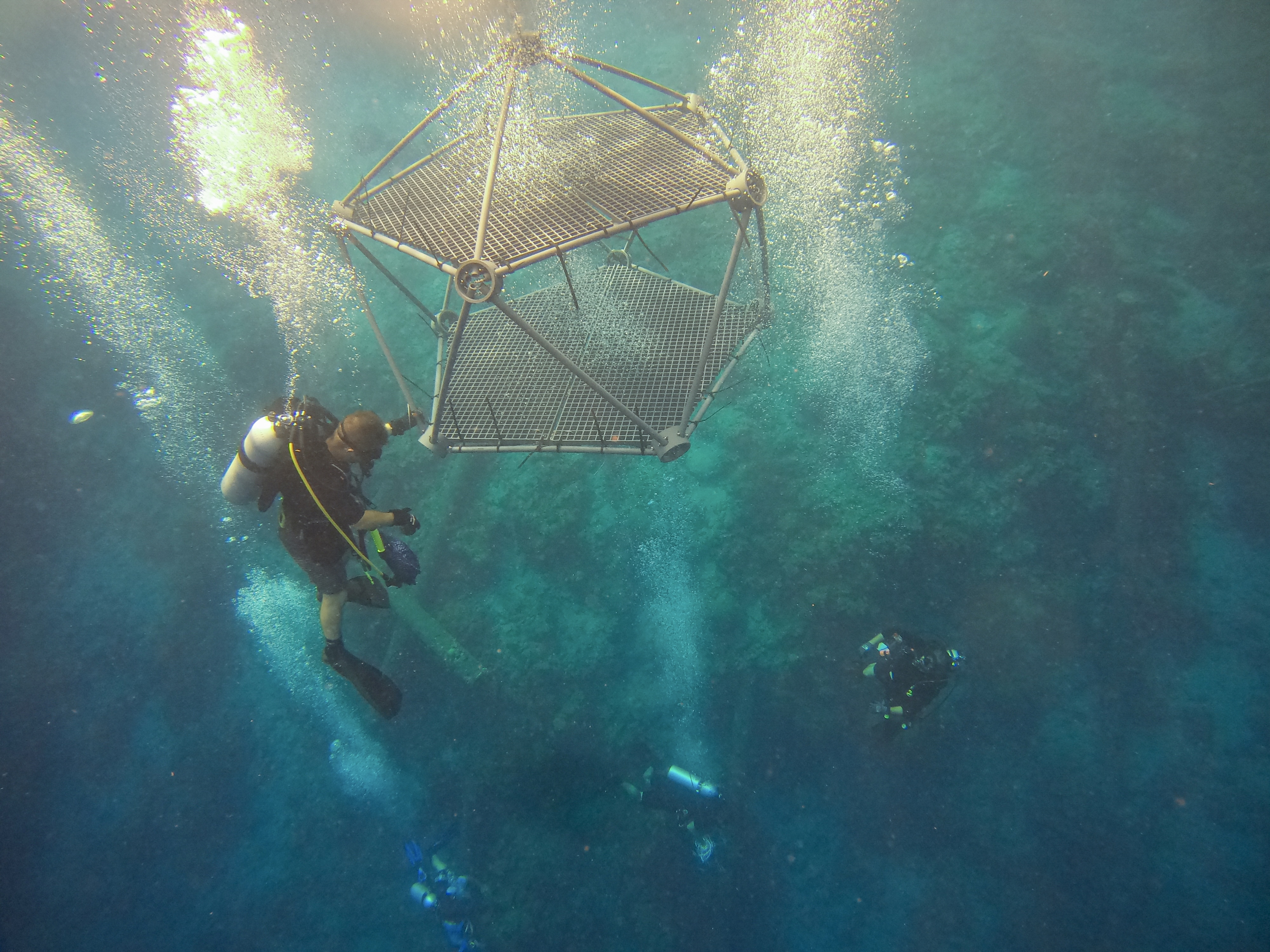
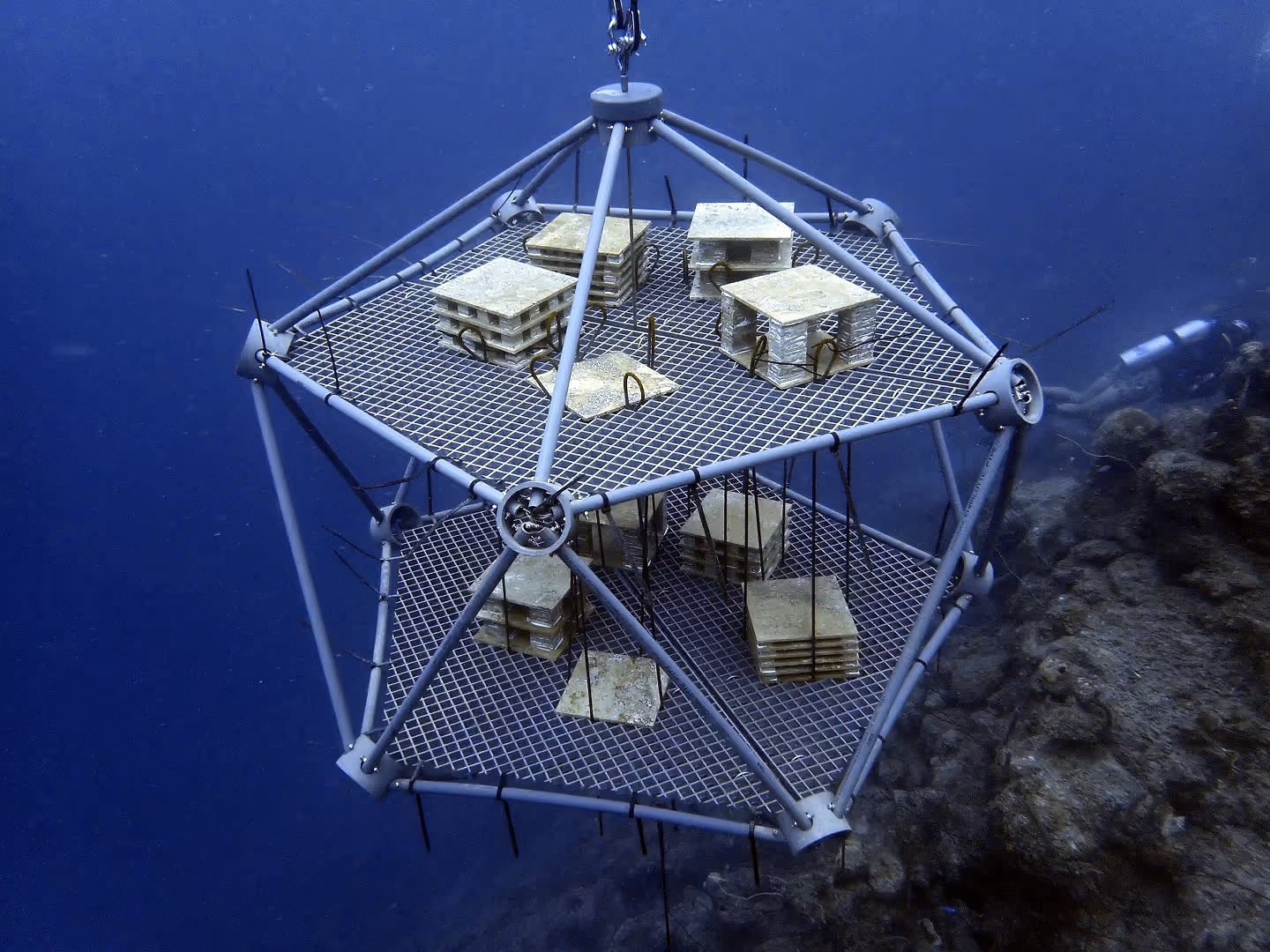
.avif)

Coral ARKs: Restoring Reefs, Reviving Hope
At Coral ARKs, we're building the future of reef restoration—combining cutting-edge science, modular design, and global community partnerships. Our mission is to revive the oceans by creating thriving reef habitats anywhere they’re needed.
.avif)
Proven Impact, Measurable Results
Coral Reef ARKs deliver real gains in coral survival, reef structure, and marine biodiversity, validated through field testing, continuous monitoring, and peer reviewed research.
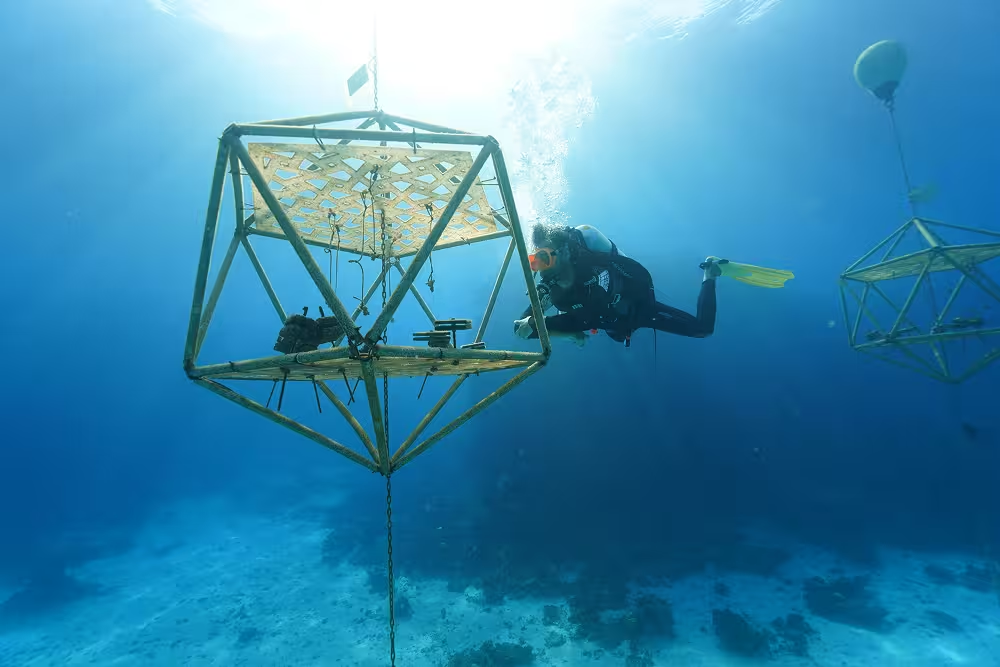
Frequently Asked Questions
Curious about how Coral ARKs work, where they’re deployed, or how you can get involved? Browse our FAQs for science-backed answers and field-tested insights from around the world.
What are ARKs
Coral Arks are modular, geodesic floating reef platforms that support coral, fish, and microbial life in midwater, designed to accelerate reef restoration where traditional seabed methods fall short.
What are ARMs
ARMs (Autonomous Reef Monitoring Structures) are standardized scientific tools that mimic reef complexity and are used to seed biodiversity and track ecosystem recovery over time.
How do ARKs and ARMs work together
Each Coral Ark is designed to host ARMs units, allowing us to restore habitat while simultaneously monitoring reef health and biodiversity with globally comparable scientific data.
How much reef can one Ark restore, and how many are needed for meaningful impact?
Each Ark restores, on average, 28 m² of reef. That means that we could deploy 100,000 Arks we could restore ~280 hectares of reef, an area larger than the country of Monaco.
Why restore coral reefs in the midwater column instead of on the seafloor?
Midwater zones offer better light, fewer predators, and reduced competition from algae, microbes, and other ecosystem components that make it hard for coral reefs. Moving to midwater, creates ideal conditions for coral survival, faster growth, and ecosystem recovery compared to traditional seabed planting.
How is the success of an Ark measured over time?
We measure the success of the ARKs by collecting data on coral recruitment, survivorship and growth; fish biomass and diversity supported; as well as social and economic data.
Where are Coral ARKs being deployed?
We’ve piloted ARKs in locations like Curaçao, Puerto Rico, and Madagascar, with expanding partnerships across the Caribbean, Indian Ocean, and Pacific regions.
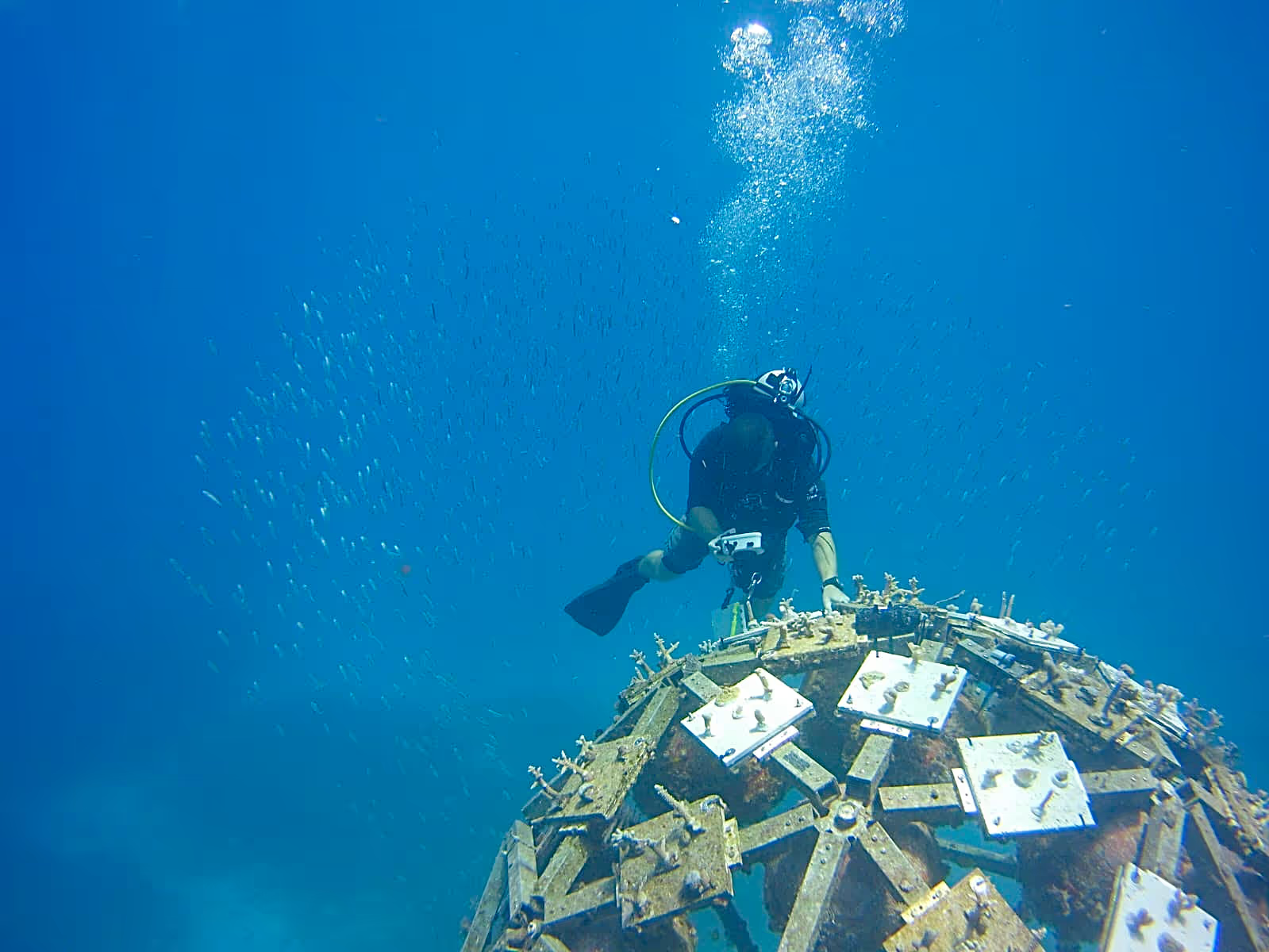
Our global team of scientists, engineers, and conservationists is ready to support your curiosity or partnership inquiry. Whether you're a student, donor, researcher, or reef practitioner—we're here to connect.

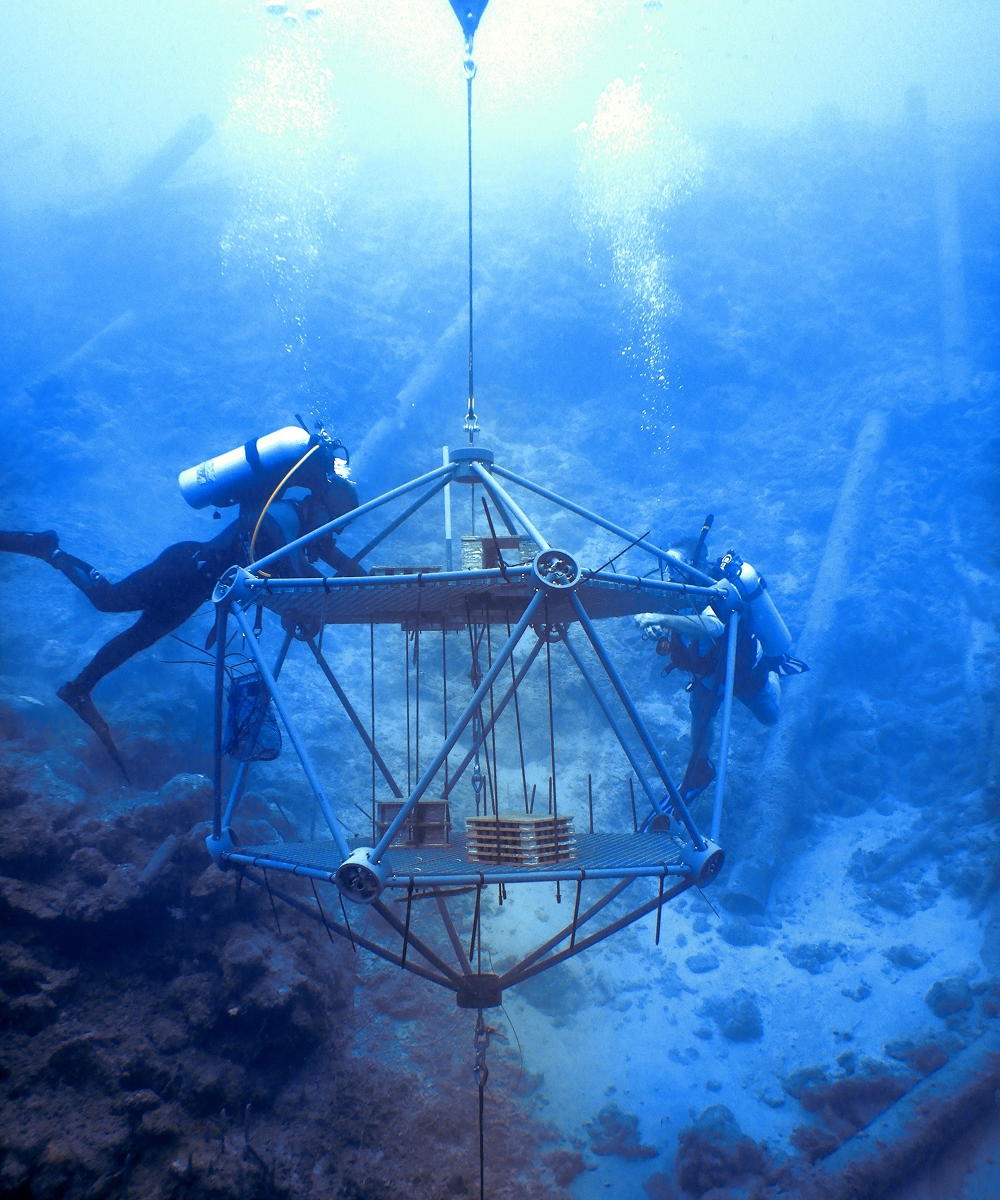

.avif)